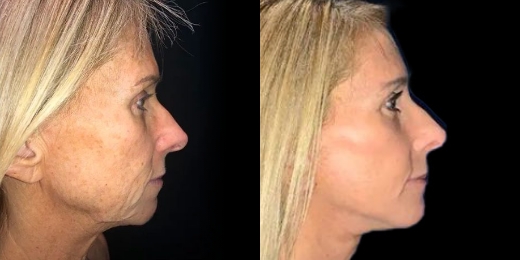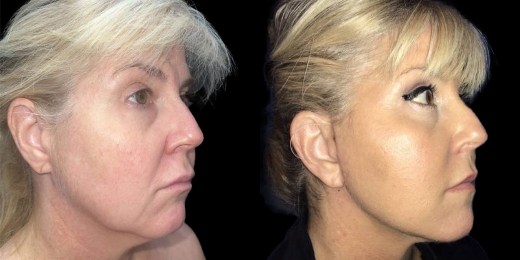Fat transfer to the buttocks, also known as a Brazilian butt lift, is now a well-established body contouring procedure. Essentially, it combines liposuction, in which large volume of unwanted fat is collected, and fat injection to reshape and augment the buttocks.
In the past, the procedure was criticized for its short-lived results due to fat absorption. Recent developments have eliminated this problem, allowing the surgeons to deliver near permanent results. Long-term results following fat transfer to the buttocks are achieved with these three critical factors:
- Gentle liposuction techniques
- Purification of fat prior to re-injection
- Meticulous fat injection into the buttocks and hips
Contents
Gentle Liposuction to Preserve the Fat Cell’s Integrity
Tumescent liposuction, which is the standard technique, is the ideal choice if the fat is going to be later used in body contouring, whereas any technique that involves heat (ultrasound and laser) should be avoided because it injures or destroys the fat cells, rendering them “unusable” in fat transfer to the buttocks. Certain donor or liposuction sites such as the lower back and flanks also boast high survival rate of fat grafts arguably due to their proximity to the buttocks and hips.
Purification of Fat
Aside from fat, the cannula (a blunt-tipped, hollowed tube) also inadvertently removes other biomaterials such as blood and oil. On top of that, the donor sites are infused with anesthetic fluids. Our plastic surgeon will carefully filter out biomaterials from the fat, ensuring that only purified and stable fat cells will be re-injected into the buttock area. This is done to help you get the best results possible results from your Brazilian butt lift.
Meticulous Fat Injection
During a procedure like a Brazilian butt lift, fat grafts should be placed in a way that simulates naturally-occurring fats. Hence, micro-droplets of fat (a mere 0.1 cc) are dispersed through meticulous fat injections. This technique also ensures smooth skin surface and natural buttock contour. The use of micro-droplet technique creates small compartments of fat in which blood vessels can grow. It should be noted that blood supply is critical for the long-term survival of fat grafts, the same way it is important in skin grafts and organ transplants.
Your Responsibility As a Patient
You should also do your part in ensuring high survival rate–most surgeons define it as 70-80% long-term survival of fat grafts. A good rule of thumb is to avoid excessive and prolonged pressure on the buttocks and hips for at least three weeks when the fat grafts are in the process of forming their new blood supply and the extracellular matrix (it holds the fat, blood supply and other tissue together) is still delicate.
To further improve the survival rate of fat grafts, you should sleep on your back, use a special cushion that allows you to sit on the back of your legs instead of your buttocks, and take regular walks throughout the day for at least three weeks post-op. To know more about the processes involved in a successful fat transfer, find out if a Brazilian butt lift is right for you or simply ask any questions you may have, feel free to visit our renowned plastic surgeon at Greenberg Cosmetic Surgery in Long Island. Contact us today to set up your consultation!


